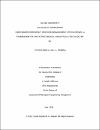INDEX-BASED EMERGENCY RESPONSE MANAGEMENT SYSTEM (IERMS): A FRAMEWORK FOR THE PETROCHEMICAL INDUSTRIAL CITIES IN QATAR
| Advisor | Pokharel, Shaligram |
| Advisor | Hammuda, Abdelmajid |
| Advisor | Abdlla, Galal |
| Author | REBEEH, YOUSUF ABDULLA M. A. |
| Available date | 2019-02-27T11:29:19Z |
| Publication Date | 2018-06 |
| Abstract | Emergency response operations are very important activities in the industrial areas. An incident in the industrial area can have considerable economic and social impact, response decisions to mitigate the impact of the incident are critical and have to be made in a very short time. Such decisions should consider the allocation of available resources in and around the industrial area. The resources to be dispatched to an incident location should also consider factors such as metrological conditions and the nature of incident location such as wind speed, wind direction, population, chemicals and materials handled, and the characteristics of surrounding industrial facilities. In this thesis, some of the factors related to the incident in the industrial areas have been studied and they are considered for the development of a location-based hazard index (LHI). A higher index value for an incident location means a higher level of response resources required to mitigate the impact of the incident. Therefore, the index provides information on the level of hazard of a particular industrial installation and its surroundings. The index is a new concept in the planning and management of response system in incident location. In order to effectively analyze the dispatch the resources, a framework called Index-based emergency response management system (IERMS) is also proposed. In the framework, data related to the incident location is used to derive the hazard index. A clustering method is used to obtain the maximum value of the index such that enough resources can be dispatched to the incident location. Two mathematical models are developed for the application of the framework, which results in time and resources required for the location and the allocation of different type of resources to the incident location. The application of the framework is demonstrated through a case study of the industrial area with petrochemical facilities. The results of the analysis show that the use of LHI and the framework helps in developing a better response to varied incident conditions. It is expected that the index, framework, and the mathematical models presented in the thesis can help the decision makers in making informed decisions on efficient allocation of resources in order to mitigate the impact of the incidence. |
| Language | en |
| Subject | EMERGENCY RESPONSE MANAGEMENT SYSTEM location-based hazard index (LHI) industrial areas |
| Type | Dissertation |
| Department | Engineering Management |
Files in this item
This item appears in the following Collection(s)
-
Engineering Management [117 items ]


